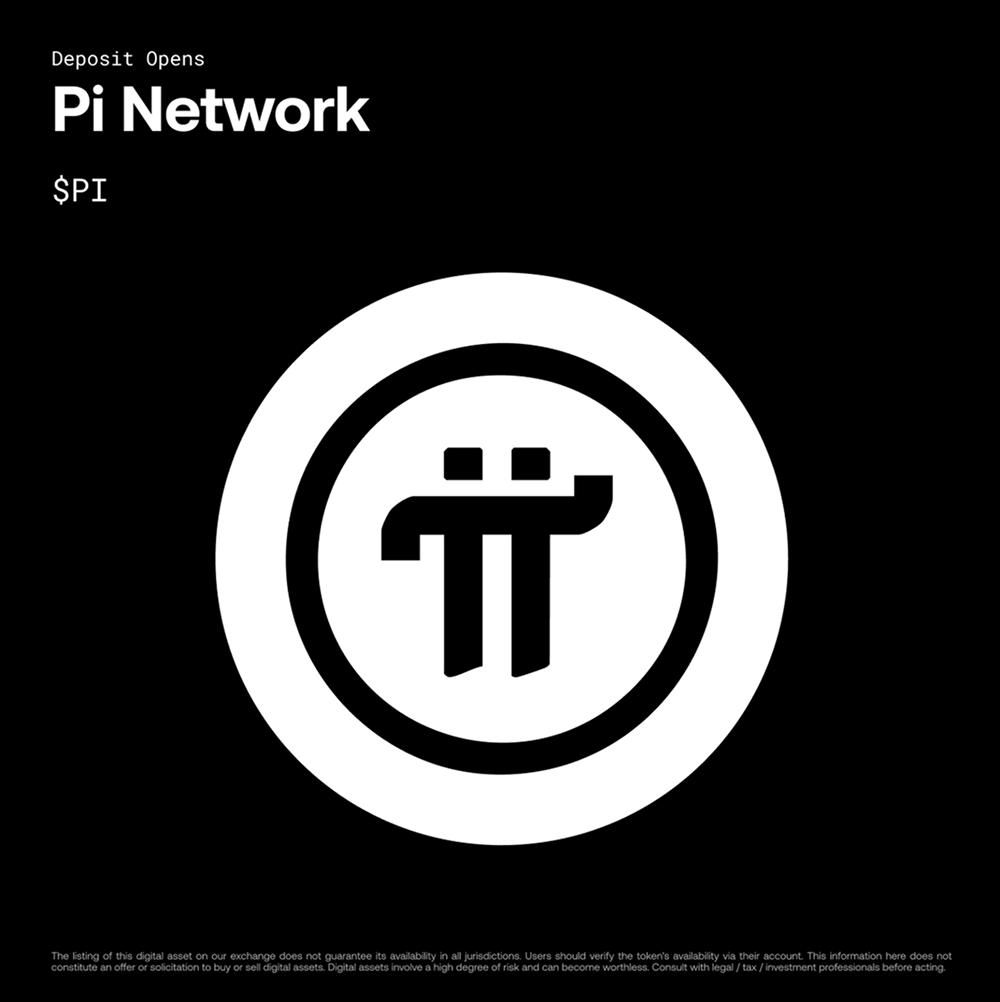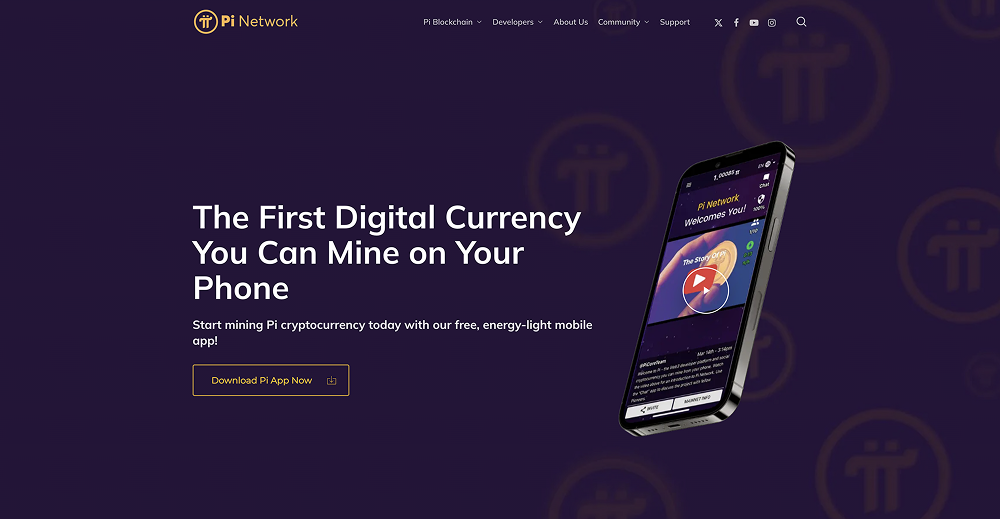The highly anticipated mobile mining project Pi Network's native token PI is about to launch on the leading cryptocurrency exchange OKX, starting spot trading.
According to the official announcement from OKX, the deposit channel for the PI token will open first on February 12, 2025, at 10:45 AM (UTC+8), while the spot trading for the PI/USDT trading pair is scheduled to officially start on February 20, 2025, at 4:00 PM (UTC+8). The user withdrawal function will be enabled the next day, on February 21, 2025, at 4:00 PM (UTC+8).

To ensure smooth trading operations, OKX will implement a series of risk control measures. Initial trading will set order size and position limits, with a maximum single order amount and user net position limit of $10,000 during the first 5 minutes after trading begins. Additionally, the exchange will introduce a circuit breaker mechanism based on index prices to respond to potential market volatility.
The launch of the PI token will adopt a "call auction" model, with a one-hour warm-up period set before official trading. During the auction phase, the maximum purchase limit for a single user will be $50,000.
It is worth noting that only limit orders will be accepted in the last five minutes of the auction, and no form of order modification or cancellation will be allowed. OKX stated that the opening price for spot trading will refer to the valuation pricing provided by the project team.
For more detailed information, please read: OKX's announcement on the launch of PI (Pi Network) spot trading
Pi Network: A Mobile-First Cryptocurrency Vision
Pi Network was founded on March 14, 2019, by Stanford University PhD Nicolas Kokkalis and Chengdiao Fan, aiming to lower the participation threshold for cryptocurrency through an innovative mobile mining model, allowing a broader audience to access and use digital currency.

The core idea of the project is to achieve "mining" of Pi tokens through a mobile application, without the need for specialized hardware and high energy consumption required by traditional mining.
Key features of Pi Network include:
- Mobile Mining: Users can participate in the production of Pi tokens by simply tapping their mobile app daily, with extremely low energy consumption. Its consensus mechanism relies on a social trust network rather than the traditional PoW mechanism.
- Trust Graph Consensus: Pi draws on the concept of the Stellar Consensus Protocol (SCP) to build a "trust circle" based on user invitation relationships to enhance network security and decentralization.
- Low Energy Consumption and Environmental Protection: Pi Network does not rely on high-energy-consuming mining equipment, making it more environmentally friendly compared to traditional cryptocurrencies like Bitcoin.
- Ecosystem Blueprint: Pi Network plans to build a decentralized application (DApp) ecosystem, with the Pi token expected to be used in diverse scenarios such as payments, smart contracts, and DeFi in the future. The official Pi wallet will support users in securely storing and conveniently transferring tokens.
The development of Pi Network can be divided into three phases:
- Phase One (2019-2020): Testnet phase, where early users began accumulating Pi tokens and building personal trust networks.
- Phase Two (2021-2022): Closed mainnet Beta phase, where some users completed KYC verification, and the Pi app entered the testing phase, but Pi tokens remained non-tradable.
- Phase Three (2024-Future): Open mainnet phase, where Pi tokens will achieve free transfer and are expected to be listed on decentralized exchanges for broader circulation.
It is noteworthy that the open mainnet of Pi Network has not officially launched yet. Currently, some exchanges listing the "PI" trading pair may be trading IOU (I Owe You) tokens rather than the actual PI tokens. Nevertheless, Pi Network has accumulated a large user base, with over 60 million users globally, of which 19 million have completed KYC, and 10 million users have completed the mainnet migration. Project data shows that the circulating supply of Pi tokens is approximately 6.041 billion, with a maximum supply of 100 billion.
Despite the enormous potential of Pi Network, the project itself faces some criticisms, such as the delayed launch of the open mainnet, the invitation mechanism being questioned as a "pyramid scheme," the need for greater transparency in the economic model, and an incomplete DApp ecosystem.
In the future, whether Pi Network can successfully launch the open mainnet and build a thriving application ecosystem will be key to its potential as a low-threshold payment tool in Web3. Its ultimate success or failure will depend on whether it can achieve true decentralization and create a robust ecosystem.
Disclaimer: The above content does not constitute investment advice.
If you have any questions, you can contact us through the following official channels:
AiCoin official website: www.aicoin.com
Telegram: t.me/aicoincn
Twitter: x.com/AiCoinzh
Email: support@aicoin.com
Group chat: Customer Service Yingying, Customer Service KK
免责声明:本文章仅代表作者个人观点,不代表本平台的立场和观点。本文章仅供信息分享,不构成对任何人的任何投资建议。用户与作者之间的任何争议,与本平台无关。如网页中刊载的文章或图片涉及侵权,请提供相关的权利证明和身份证明发送邮件到support@aicoin.com,本平台相关工作人员将会进行核查。




